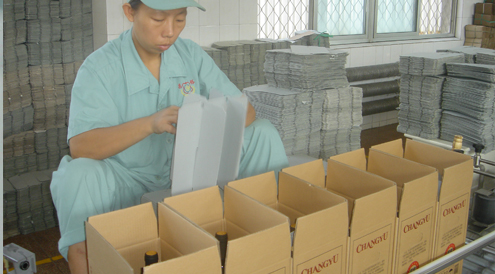
Every time I am in China (at least two to three times a year), I like to purchase a dozen or so bottles straight off a popular retailer’s shop. This is how most consumers purchase and experience wine and that is how I like to sample the wines. While I try to organise a large tasting of the top Chinese wines in all categories ever year, I have always wondered if the samples being sent to me were the same ones being sold off the retail shelves. As most Asian wine consumers know all too well, label integrity is a serious issue in China. Usually the tastings I partake in are in one of the major Chinese cities like Shanghai or Beijing, but this time, I found the opportunity while on holiday in Lijiang (city in Yunnan province) in China. I expected it to be difficult to find a wine shop but I was very surprised at how many there were in this remote city with few expatriates or tourists. I had the option of at least a dozen that I passed by in the city centre and I chose one that had a reasonable Chinese wine selection. This shop had all the usual big Chinese wine producers such as Great Wall and Changyu so I selected wines that were all around 100 Yuan (US$12). This is higher than the average amount paid for a Chinese wine but I wanted to taste what was considered the ‘premium’ level. I purchased 8 bottles: China France Elephant Badge Winery Co. Ltd.’s Xianghui – 1982 Cabernet Dry Red Wine; Yunnan Highland Wine Co. Ltd.’s Yunnan Red Wine; Hong Kong Xinzhangyu International Winery Co. Ltd.’s Zhongyun Cabernet Dry Red Wine; Dynasty’s Dry Red; Changyu’s Dry Red; Golden Greatwall Winery Co. Ltd.’s Cabernet Dry Red; Shangri-la Winery Co. Ltd.’s Tibetan Dry; Gold Great Wine Brew Co. Ltd.’s Huaxia Special 1992 Cabernet Dry Red. There were no wines above 12% alcohol and the vintage date in the front label was just part of the wine’s name. The manufacture date in the back had another vintage date so I used this one when writing up my notes as the approximate vintage of the wine. The 1982 was clearly not a 1982 and even the 1992 was also a wine from a very young recent vintage. Changyu cleverly created a label with the designation 1992 which implied a Special Selection (like Reserve) and marketed widely in China (although others are beginning to catch on). The vintage date became ingrained as a quality designation in the minds of many consumers and copycat wines like Huaxia using 1992 are testament to its success. The wines from the wine shop in Lijiang were disappointing/ The Chinese wine tastings I had done previously were in Shanghai, Beijing or Hong Kong and each year, I noticed an improvement — more varietal definition, greater mid palate weight, less faults and greater drinkability. But these wines were sitting in the open shelves without any air-conditioning or refrigeration. They were thin, dilute, faulty and oxidized – some had all of the above issues. It reminded me of tastings I had put together six or seven years ago when every other wine had faults or other serious quality issues. The selections I put together in the past from Carrefour in Shanghai or Beijing were much better in quality, even for the same exact wine – Changyu Dry Red, for example, or Great Wall Cabernet.









